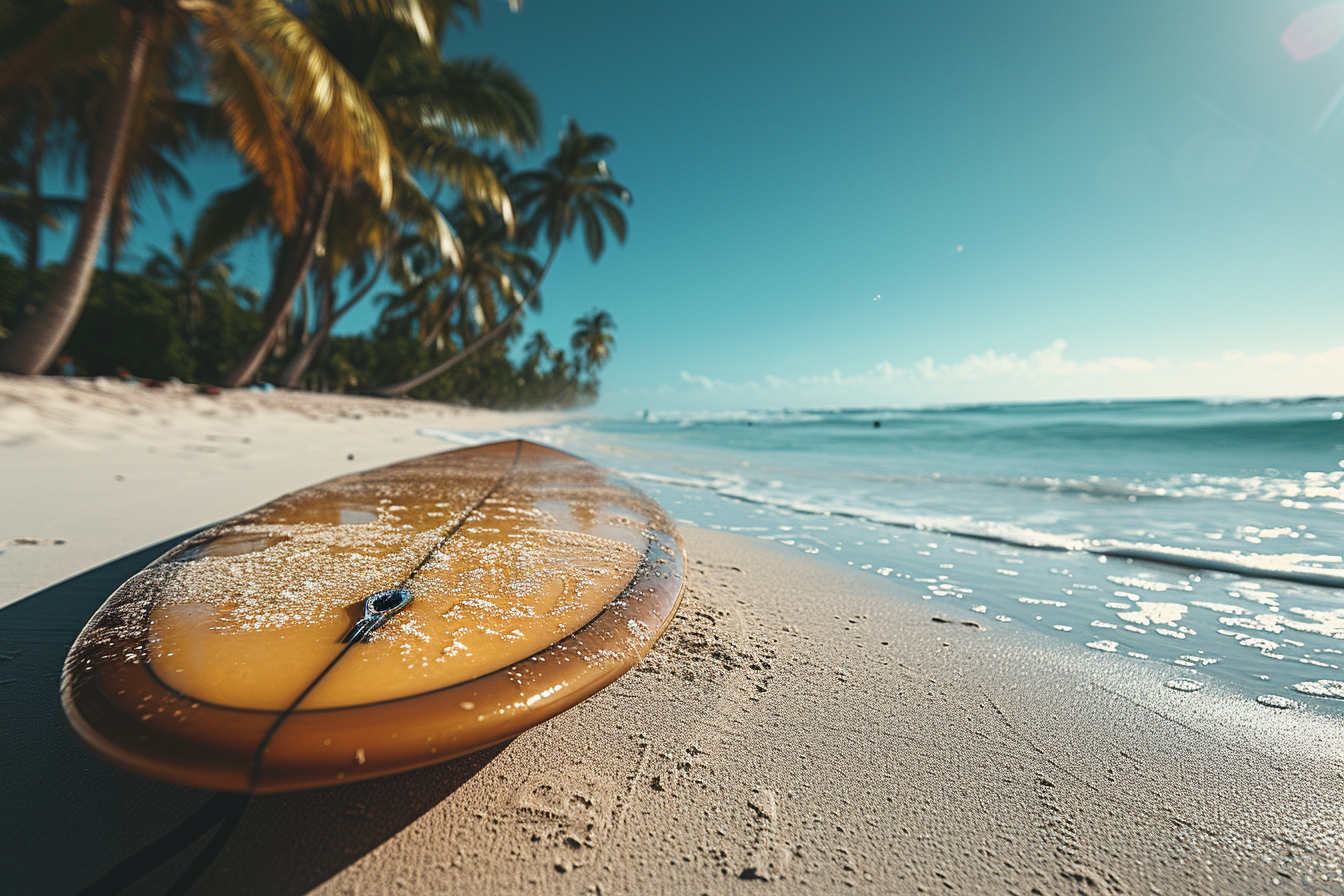When gearing up for the thrill of riding waves, the surfboard beneath your feet is not just a piece of equipment; it’s your partner in the dance with the ocean. Choosing the right surfboard can make an enormous difference in the quality of your experience.
Here we delve into the key factors vital in the selection process, ensuring that your surfboard complements your skills, style, and the waves you aspire to conquer.
Understanding surfboard anatomy

Before diving into the details of surfboard selection, it’s essential to grasp the basic elements of surfboard anatomy. The overall shape and contours of a surfboard, known as its ‘outline’, contribute significantly to how it performs in the water. Major components include:
- The Nose: This is the front tip of the board. Wider noses offer better stability, while narrower noses are designed for sharper turns.
- The Tail: At the opposite end is the tail, which can come in various shapes, affecting the board’s maneuverability.
- The Rails: These are the edges of the surfboard. Fuller rails provide better stability, while thinner rails are more responsive.
- The Rocker: This term refers to the curve of the surfboard from nose to tail. A pronounced rocker aids in performing sharp turns, while a flatter rocker increases speed.
- The Fins: They provide direction and stability. The setup can vary from a single fin to multiple fin configurations.
- The Volume: Surfboard volume, measured in liters, influences the ability to float and paddle.
Skill level and surfboard type
Matching your surfboard to your skill level is not merely about comfort; it’s about progression. For beginners, a larger board with ample volume and a soft-top construction is usually recommended, creating a stable and forgiving platform to build confidence and basic skills.
Intermediate surfers may transition to smaller, more responsive boards. At this level, experimenting with different materials and tail shapes can refine your surfing style.
Advanced surfers might opt for performance boards that are shorter, have less volume, and sport an aggressive rocker profile for acute maneuvers on critical sections of the wave.
Wave conditions matter
Your local surf spot dictates the type of board that will help you excel. For slow and mellow waves, longboards or funboards, which are typically longer and have more volume, can catch waves easily and glide smoothly.
In contrast, shortboards excel in fast and steep waves, providing the control and speed necessary to attack the wave face with force and precision. Qualities such as a sharp rocker and narrower outline enhance performance in such conditions.
In areas with a variety of wave types, a hybrid or fish surfboard can offer versatility, combining the paddle power of a longboard with some of the maneuverability of a shortboard.
Personal preferences and surfing style
Personal style plays a substantial role in surfboard choice. If you enjoy a relaxed glide and long, sweeping turns, a classic longboard or funboard aligns with your sensibilities. For surfers drawn to the dynamic, high-energy side of the sport, a performance shortboard may resonate more.
Furthermore, consider how your surfing aspirations might influence your selection. If you aim to improve your aerial maneuvers, a board with a lighter construction and more pronounced kick in the tail would be beneficial.
Construction and materials
The construction of a surfboard determines its durability, weight, and flex patterns. Traditional fiberglass surfboards offer a classic feel and are renowned for their performance. Epoxy boards, on the other hand, are lighter and more buoyant, which can be advantageous for weaker waves.
Advancements in technology have introduced options like carbon wraps and varying foam densities, giving surfers exceptional levels of customization to match the flex and feel they seek.
Board dimensions
Delving into the nitty-gritty, the dimensions of a surfboard—length, width, and thickness—should be tailored to your body type and ability.
- Length affects paddling and stability. Taller or larger surfers generally require longer boards.
- Width contributes to stability and floatation. A wider board is more forgiving and stable.
- Thickness impacts buoyancy and paddle power, with thicker boards being more suitable for heavier surfers or those seeking an easy paddle.
Analyzing the dimensions in conjunction to the board’s volume and your weight ensures you select a surfboard that can support your body efficiently without sacrificing performance.
Fin configuration
Fins influence the direction, stability, and overall feel of the board. A single-fin setup is great for steady cruising and drawing clean lines, whereas a thruster (three-fin setup) offers a balance of stability and maneuverability.
For a looser, more playful ride, a twin fin can provide a markedly different experience. Quad fin setups can provide speed in smaller waves while maintaining control. Understanding the effects of different fin setups will allow for better-tailored choices depending on your surfing style and the wave conditions you regularly encounter.
Try before you buy
One of the best strategies when selecting a surfboard is to test different types and shapes. Many surf shops offer demo days or rental options to let you feel out a board before committing to a purchase. Experiencing how a board handles in the water is invaluable and will guide you to the ideal match.
Remember, choosing a surfboard is a personal journey filled with both analytical decision-making and gut instincts. While expert advice can steer you in the right direction, ultimately your own experiences and feelings on a board will be the most telling. By approaching the selection process methodically and considering all the factors outlined above, you’ll be well-equipped to find the perfect surfboard for your wave-riding adventures.
